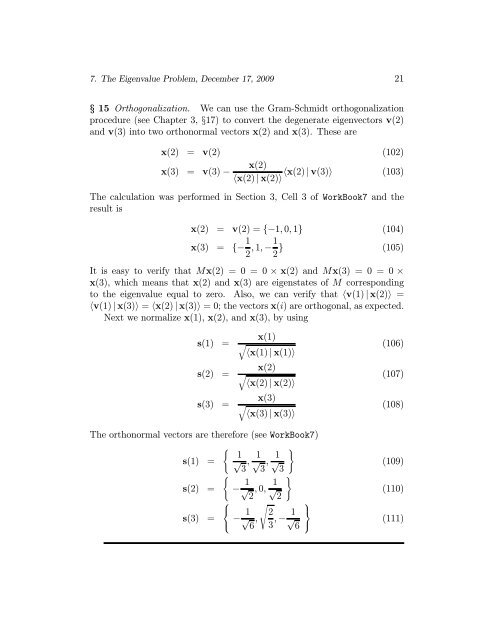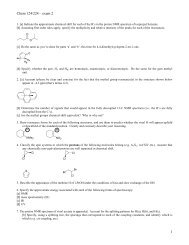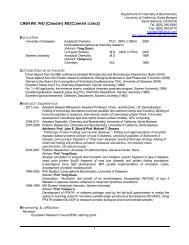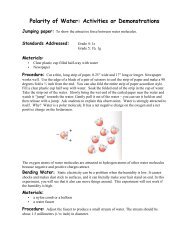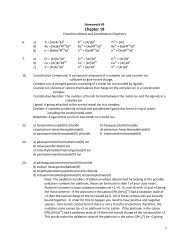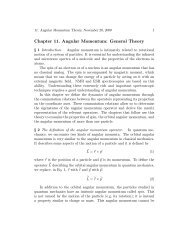Chapter 7. The Eigenvalue Problem
Chapter 7. The Eigenvalue Problem
Chapter 7. The Eigenvalue Problem
You also want an ePaper? Increase the reach of your titles
YUMPU automatically turns print PDFs into web optimized ePapers that Google loves.
<strong>7.</strong> <strong>The</strong> <strong>Eigenvalue</strong> <strong>Problem</strong>, December 17, 2009 21<br />
§ 15 Orthogonalization. We can use the Gram-Schmidt orthogonalization<br />
procedure (see <strong>Chapter</strong> 3, §17) to convert the degenerate eigenvectors v(2)<br />
and v(3) into two orthonormal vectors x(2) and x(3). <strong>The</strong>se are<br />
x(2) = v(2) (102)<br />
x(3) =<br />
x(2)<br />
v(3) −<br />
x(2) | v(3)<br />
x(2) | x(2)<br />
(103)<br />
<strong>The</strong> calculation was performed in Section 3, Cell 3 of WorkBook7 and the<br />
result is<br />
x(2) = v(2) = {−1, 0, 1} (104)<br />
x(3) = {− 1 2 , 1, −1 2 } (105)<br />
It is easy to verify that Mx(2) = 0 = 0 × x(2) and Mx(3) = 0 = 0 ×<br />
x(3), which means that x(2) and x(3) are eigenstates of M corresponding<br />
to the eigenvalue equal to zero. Also, we can verify that v(1) | x(2) =<br />
v(1) | x(3) = x(2) | x(3) =0;thevectorsx(i) are orthogonal, as expected.<br />
Next we normalize x(1), x(2), and x(3), by using<br />
s(1) =<br />
s(2) =<br />
s(3) =<br />
x(1)<br />
<br />
x(1) | x(1)<br />
(106)<br />
x(2)<br />
<br />
x(2) | x(2)<br />
(107)<br />
x(3)<br />
<br />
x(3) | x(3)<br />
(108)<br />
<strong>The</strong> orthonormal vectors are therefore (see WorkBook7)<br />
s(1) =<br />
s(2) =<br />
s(3) =<br />
1√3<br />
,<br />
<br />
<br />
1 1<br />
√ , √<br />
3 3<br />
− 1 √<br />
2<br />
, 0,<br />
<br />
1<br />
√<br />
2<br />
⎧<br />
⎨<br />
⎩ − √ 1 ⎫<br />
2<br />
, 6 3 , − √ 1 ⎬<br />
6 ⎭<br />
(109)<br />
(110)<br />
(111)


